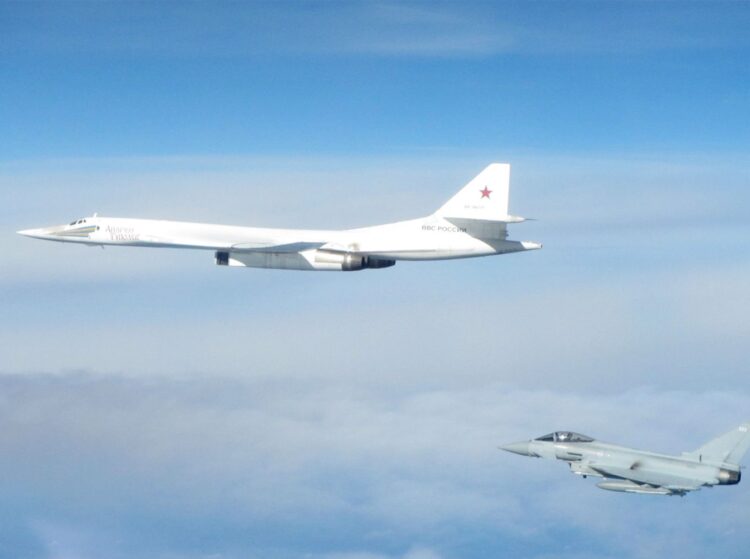By Tony O’Reilly-
RAF Typhoon jets intercepted Russian bombers flying north of Scotland in the early hours of Monday morning, the UK government has said.
Typhoon fighters were scrambled to intercept two Russian long-range maritime patrol bombers as they transited near the Shetland Islands within NATO’s northern air policing area, the government added.
The UK quick reaction alert (QRA) jets were launched from RAF Lossiemouth in northeast Scotland and the two Russian bombers were monitored in international airspace as they flew north of the UK.
A Voyager refueling tanker was also launched and remained airborne for the duration of the mission – not specified by the Ministry of Defence (MoD) – to offer air-to-air refueling to the Typhoon fighters if needed.
This proactive response reflects the preparedness of the United Kingdom’s defense forces to monitor and respond to potential airspace incursions, even in the most remote and challenging conditions.
Geopolitical Tensions and Deterrence
The interception of Russian bombers by RAF Typhoon jets is a reminder of the ongoing geopolitical tensions between NATO countries and Russia. The Baltic Sea region and the North Atlantic have witnessed a surge in airspace violations and military activities, emphasizing the importance of a strong and responsive defense posture.
These interceptions serve not only as a means of defense but also as a message of deterrence. Demonstrating the ability to intercept and monitor potential threats sends a clear signal that violations of national airspace will not go unnoticed or unaddressed. This proactive stance aims to discourage any escalation of military actions that could destabilize the region.
Collaborative Defense Measures
The involvement of the Voyager refueling tanker highlights the collaborative nature of modern defense operations. In an interconnected world, international security relies on cooperation among nations. The ability to refuel in mid-air extends the reach and endurance of fighter jets, enabling them to effectively monitor and respond to potential threats over longer distances and durations.
Collaborative defense measures also exemplify the unity and strength of NATO alliances. Interceptions like these are not isolated incidents but rather part of a broader strategy to maintain stability and security across the alliance. The collective efforts of member states emphasize the shared commitment to uphold mutual defense obligations and protect each other’s sovereignty.
The interception of Russian bombers by RAF Typhoon jets underscores the technological advancements that have transformed air defense capabilities. The Typhoon itself is a cutting-edge fighter aircraft equipped with radar systems, sensors, and communication tools that enable rapid identification and engagement of potential threats.
Moreover, the integration of air-to-air refueling capabilities extends the operational range of fighter jets, allowing them to cover vast distances and respond to evolving threats. This fusion of technology and strategic planning reflects the evolution of modern defense systems in effectively countering diverse security challenges.
Interceptions like these serve as a reminder that modern military capabilities are not solely about aggression but about upholding national and international security. By ensuring the credibility of defense systems, nations can deter potential adversaries and contribute to global stability.
The lead RAF Typhoon pilot, who was not named by the MoD, added: “It’s really satisfying to know we’ve been able to make a successful intercept, maintaining the integrity of UK and NATO airspace.
“When the alarm for a scramble happened in the early hours of the morning, the adrenaline kicked in. Working in tandem with ground control operators, and with air-to-air refuelling from an RAF Voyager, we were able to stay on task until the mission was complete, and the target aircraft departed the UK’s area of interest.”




